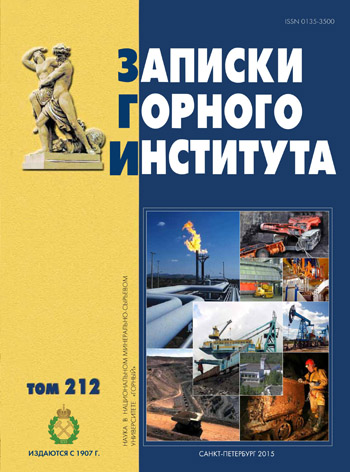Application of the time-domain electromagnetic method for shallow groundwater prospecting IN Itay El-Baroud area, Nile Delta (Egypt)
- 1 — post-graduate student National Mineral Resources University (Mining University)
- 2 — professor Mansoura University
- 3 — professor National Research Institute of Astronomy and Geophysics
- 4 — professor National Research Institute of Astronomy and Geophysics
Abstract
The Nile Delta is not only the oldest known ancient delta, but also is the largest and most important depositional complex in the Mediterranean sedimentary basin. Furthermore, it is a unique site in Egypt that is suitable for accumulation and preservation of the Quaternary sediments. There are very few investigations which have been carried out on the Upper Quaternary sediments of the western part of the Nile Delta. The present paper is mainly concerned with the application of the geophysical technique in the form of electromagnetic method to investigate the Quaternary sediments sequence as well as detecting the groundwater aquifer in the area of study.A site of 232 TEM sounding in 43 stations were carried out using a «SIROTEM MK-3» time-domain system. A simple coincident loop configuration, in which the same loop transmits and receives signals, was employed. The loop side length was 25 m. A 1-D modeling technique was applied to estimate the depth and the apparent resistivity of the interpreted geoelectrical data.Based on the interpretation of the acquired geophysical data, four geoelectric cross-sections were constructed. These sections show that the Upper Quaternary sequence consists of three geoelectric layers. The Holocene Nile mud is split into two layers: the agricultural root zone (Layer 1); thick water saturated mud (Layer 2). The Upper Pleistocene sandy aquifer (Layer 3) has very complicated non-linear boundary.
References
- Atwia M.G., Khalil J.B., El Awady M.M., Habib M.M. Hydrochemistry and water quality of groundwater in the central part of the Nile Delta, Egypt. Egyptian Journal of Geology. 1996. Vol.41/2B, p.743-764.
- Kaufmann A.A., Keller G.V. Frequency and transient sounding. Methods in Geochemistry and Geophysics, Elsevier Publ. Co., 1983. Vol.16, p.685.
- Said R. The geological evaluation of the River Nile. New York, Heidelberg, Berlin: Springer Verlag, 1981, p.151.
- Serag El-Din H.M. Geological, hydrogeological and hydrological studies on the Nile Delta Quaternary aquifer. PhD Thesis, Faculty of Science, Mansoura University, Egypt, 1990, p.300.
- Rizzini A., Vezzani F. Cococcetta V., Milad G. Stratigraphy and sedimentation of Neogene-Quaternary section in the Nile Delta area (A.R.E.). Marine Geology. 1978. Vol.27, p.327-348.
- Zaghloul Z.M., Taha A.A., Hegab O.A., El-Fawal F.M. The Neogene-Quaternary sedimentary basins of the Nile Delta, Egypt. Journal of Geology. 1997. Vol.21, p.1-19.
